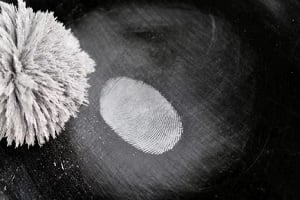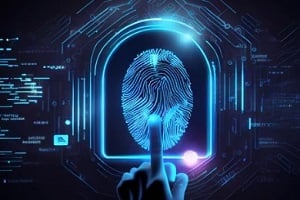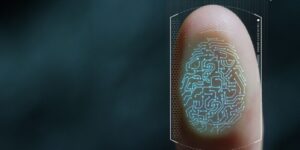Forensic fingerprinting analysis has been used by law enforcement for more than a century. This important form of police technology plays a critical role in criminal investigations and can be used to confirm or disapprove a suspect’s identity.
Fingerprints can also be used to link one crime scene to another that involves the same person. Identification of a person through fingerprint analysis can help investigators track a person’s criminal record, including their prior arrests and convictions.
Here is a closer look at how fingerprints are identified and used in law enforcement.
Why Fingerprinting Is Used in Forensics
 While a fingerprint may not appear to be a solid piece of evidence, a single print can tell investigators a lot about a person. No two people have the exact same fingerprints, including people with nearly identical DNA, such as identical twins.
While a fingerprint may not appear to be a solid piece of evidence, a single print can tell investigators a lot about a person. No two people have the exact same fingerprints, including people with nearly identical DNA, such as identical twins.
A fingerprint is simply an impression left by the small ridges of the fingertip. Depending on how a person places their finger on an object or surface, a fingerprint left behind may be full or partial, such as the tip of a thumbprint.
When a fingerprint is found at the scene of a crime, investigators typically try to match it with fingerprints they have on file or fingerprints provided by the suspect. Deliberate impressions of entire fingerprints can be taken using ink and paper, or in today’s digital era, can be obtained electronically.
What makes human fingerprints an effective form of evidence is that fingerprints are highly detailed, difficult to alter, unique and reliable over the course of a person’s life. This means that a person’s fingerprints do not change over time.
How Fingerprinting Patterns are Analyzed
The ridges and furrows found on the human fingerprint create a unique pattern. In forensics, this pattern is analyzed to determine who it belongs to by looking for patterns that fall into three distinct categories:
- Loops: This fingerprint pattern forms a loop shape but recurves on itself. It may also be considered an ulnar loop if it points towards the ulna bone or a radial loop if it points towards the thumb. Loop fingerprints make up the majority of fingerprint patterns.
- Arches: An arch fingerprint pattern appears as waves with bent arches and plain arches that come to a sharper point. Just a small percentage of people have fingerprints with an arch pattern.
- Whorls: A whorl fingerprint pattern features a central pocket loop which appears as a loop with a whorl on one end. It may also appear as a double loop with two loops in an S-shaped pattern. Accidental loops can also occur which have an irregular shape. Whorl fingerprint patterns are fairly common.
Ways Fingerprints are Collected and Used
Fingerprints can be imprinted by a wide range of materials, such as ink, dirt or blood. With these types of materials, the fingerprint pattern can be more easily analyzed as the ridges are visible to the naked eye.
Other types of fingerprints are more difficult to see, such as those that occur due to sweat or residual body oils from the skin’s surface. These fingerprints that are not visible to the naked eye are known as latent fingerprints. When fingerprints are pressed into soft materials, such as softened wax or fresh paint, they are referred to as plastic.
Retrieving different types of fingerprints depends on the surface. For example, fingerprints on porous surfaces, such as paper, cardboard or firewood, require a special chemical reagent, ninhydrin, which is sprinkled over the prints and causes a chemical reaction producing an stain pattern of the print.
 Investigators typically use a powder and brush technique when lifting fingerprints from a non-porous surface, such as glass, plastic or varnished wood. Silicone casting materials are generally needed for retrieving fingerprints from semi-porous surfaces that contain texture or grooves.
Investigators typically use a powder and brush technique when lifting fingerprints from a non-porous surface, such as glass, plastic or varnished wood. Silicone casting materials are generally needed for retrieving fingerprints from semi-porous surfaces that contain texture or grooves.
Fingerprints are most commonly used for identification purposes. For example, if fingerprints are found at the scene of a murder, an investigator will lift the fingerprints to try and identify or eliminate suspects.
Of course, fingerprints can also be used for non-criminal reasons, such as to log into a locked cell phone or to perform a background check in preparation for a new job. Today, fingerprinting technology is even used in the healthcare sector. Fingerprints can be used to identify a donor for transplant or to aid in the development of a customized treatment plan.
Expert Fingerprinting Software Solutions
Fingerprinting is one of the oldest and most accurate methods of identifying an individual. Criminals often make the mistake of leaving evidence at the scene of a crime, including incriminating fingerprints.
CPI OpenFox offers comprehensive law enforcement software solutions designed to streamline police operations and ensure accuracy. OpenFox offers live scan fingerprinting software that is customized to allow law enforcement to submit fingerprints to the FBI and other regulated authorities. To learn more about fingerprinting software, schedule a consultation with CPI today.


